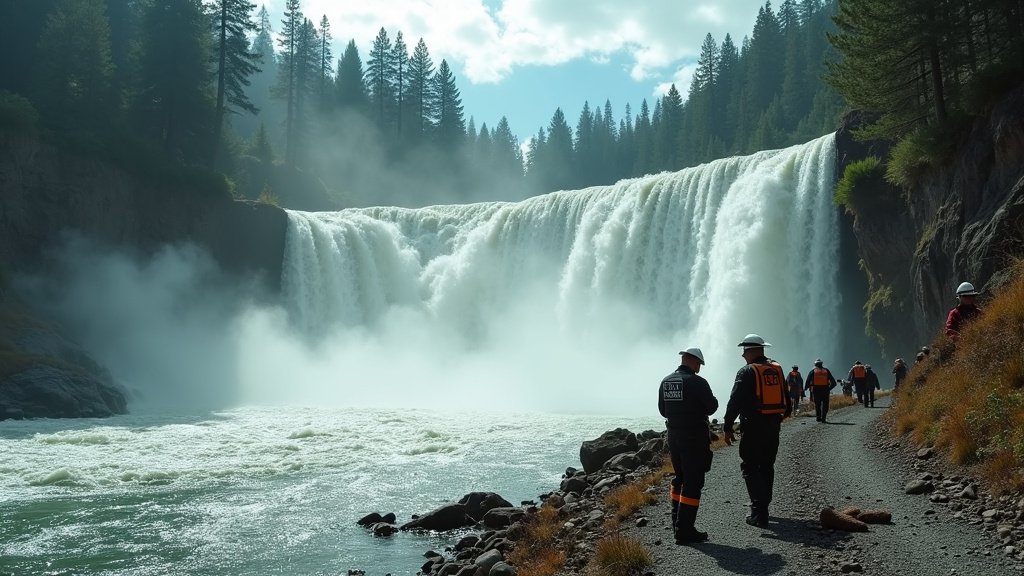Oregon’s prominent ski industry is grappling with a significant challenge to its operational stability following the withdrawal of a major insurance provider from the state. This move dramatically reduces the available options for mountain resorts seeking crucial coverage, leaving only one insurer of this specific kind remaining in the Oregon market.
The departure underscores the increasingly complex risk management landscape faced by recreational facilities, particularly those operating in dynamic and high-risk environments like ski slopes. The development, reported by Justin Higginbottom, is set to impact ski resorts across Oregon by reducing their insurance options, potentially leading to increased operational costs and complicating future planning.
Understanding the Impact
Ski resorts require comprehensive insurance coverage that goes far beyond standard business policies. Their operations involve inherent risks, including but not limited to, guest injuries on slopes or lifts, property damage from weather events or accidents, and employee injuries. This necessitates specialized policies that cover premises liability, professional liability, workers’ compensation, and extensive property insurance tailored to mountain environments.
A “major ski resort insurer” specializes in assessing and underwriting these complex risks, often offering coverage limits and terms specifically designed for the ski industry’s unique exposures. The exit of such a provider means that resorts lose a key option for obtaining this vital protection. For businesses operating on narrow margins, the availability and affordability of insurance are critical factors influencing everything from daily operations to long-term capital investments.
The Shrinking Market
While the specific reasons for the insurer’s withdrawal were not detailed in the original report, such decisions are often influenced by factors including the profitability of policies within a given state, the frequency and severity of claims, the regulatory environment, and the perceived future risks associated with operating in a particular region. Climate change, for instance, can introduce volatility in snow conditions, potentially affecting business viability and thus insurance risk.
The consequence of this exit is profound: a market that previously had multiple significant providers of specialized ski resort insurance is now effectively reduced to a near-monopoly or duopoly state, with only one insurance company of this kind left in the state. This lack of competition typically empowers the remaining provider, potentially allowing them to increase premiums, narrow coverage terms, or become more selective about the risks they choose to underwrite. For resorts, this means less leverage in price negotiations and fewer alternatives if the terms offered by the sole remaining insurer are unfavorable or insufficient.
Challenges for Oregon Resorts
The practical implications for ski resorts across Oregon are varied but uniformly challenging. Resorts may face significant premium increases upon renewal, diverting funds that could otherwise be used for infrastructure improvements, safety enhancements, or employee wages. Some smaller or more risk-exposed resorts might find it difficult to secure adequate coverage at all, potentially putting their future operations at risk.
Furthermore, navigating the insurance market with drastically reduced options can be time-consuming and complex. Resort operators and their risk management teams must now work primarily with a single provider, which could lead to delays in obtaining quotes or negotiating terms. The terms and conditions offered by the remaining insurer will become the industry standard in the state, leaving resorts with little recourse if those terms are not ideal for their specific operational profile.
Seeking Solutions
Faced with this challenge, Oregon’s ski resorts will likely explore various strategies. These could include pooling resources to create ‘captive’ insurance entities, where the insured businesses collectively own the insurance company, or seeking support from industry associations to lobby for solutions. They may also need to invest heavily in risk mitigation strategies – such as enhanced safety protocols, updated equipment, or improved trail maintenance – to present a more attractive risk profile to the remaining insurer and potentially lower costs.
The state legislature or regulatory bodies might also become involved, examining ways to stabilize the market or attract new insurers, although such processes are often lengthy and complex.
In conclusion, the exit of a major specialized insurer has thrust Oregon’s ski industry into a precarious position regarding risk management and financial stability. With only one insurance company of this kind left in the state, resorts across Oregon are facing reduced insurance options and the associated challenges of a tightened market. The long-term impact on the industry, a significant contributor to the state’s winter tourism economy, will depend on how effectively resorts can navigate this new landscape and secure the essential coverage needed to operate safely and sustainably.




